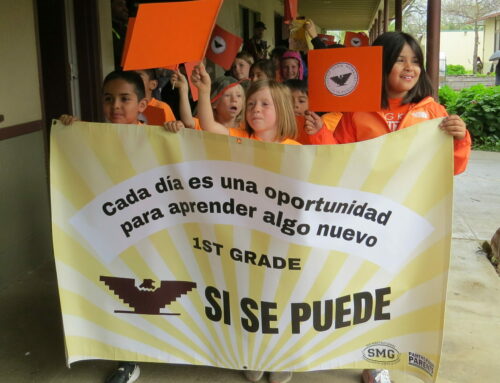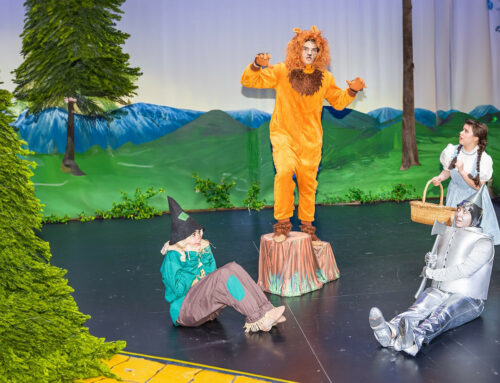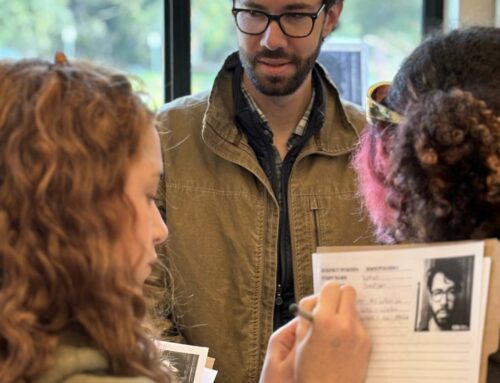Clubs help members learn about leadership, teamwork, work ethics and life
Published in the July 19 – August 1, 2017 issue of Gilroy Life
By Marty Cheek

Photo courtesy Marisa Anne Tsuboi
Live Oak High School FFA club member Katie Boynton in the judging corral with her sheep at last year’s Santa Clara County Fair.
The Santa Clara County Fair reminds residents in the heart of Silicon Valley that long before Apple and Google this region was famous for its prunes, apricots and other orchard products. And following a tradition that stretches back generations, students at Live Oak and Sobrato high schools are busy preparing to show their livestock when the four-day fair opens Aug. 3.
Future Farmers of America members at both schools learn skills in leadership, teamwork and work ethics as they care for their animals to exhibit them to judges at the Santa Clara County Fair. Among the students is Jenna Fields, 16, a senior and chapter president of Sobrato’s FFA club. The fair is an important part of the time students spend in their FFA involvement, especially if they take advantage of all the opportunities and skills the program offers. She shows market steers taken from her own herd of commercial cattle which she runs in a cow/calf operation at home. This year she will show a 16-month-old black Angus steer.
“This is my third year taking one of my steers to fair, and for each steer the preparation process is a little different as each steer is different,” she said. “First I handle the gentling and halter breaking of my steer, allowing the animal to become more accustomed to being around people and giving to the pressure of the halter.”

Live Oak High School FFA member Geno Beltran with his steer after winning a blue ribbon at last year’s Santa Clara County Fair. Photo courtesy Marisa Anne Tsuboi
Once the steer is gentle, Fields works with him for longer periods of time and begins a routine of walking in order to build up muscle. This continues for months, as raising a steer is one of the longer term commitments involved in taking an animal for fair.
“Throughout this time, I make sure that I am feeding my steer the correct type of grain and hay in order to ensure the best end result and best fat cover as well as keeping the animal’s digestive system functioning correctly,” she said. “As the fair grows closer, I begin to train my steer to respond to the show halter and steer stick (a piece of show equipment used to move their feet into position) as well as practicing personal showmanship.”
Around late June to early July, she writes letters to send to prospective buyers in preparation to sell the steer at auction. One of the last things she does before going to the fair is properly clipping and fitting her steer in order to clean up his appearance and excel in the showmanship part of the fair.

“Through this experience, students have the opportunity to get a taste for what it is like to be a part of production agriculture while gaining responsibility and accountability that will serve them well later in life,” she said. “They learn more about the agriculture industry as a whole while learning about the specific species of animal they show.”
Students taking market animals to fair have the opportunity to make a profit by selling their animal, gaining funds which they can use to either fuel their next project or put toward their future education, she said. FFA members who participate in the county fair come away with a greater understanding of the agriculture industry and qualities such as responsibility and diligence, both of which help to build a stronger future for both the industry and the world as a whole, she said.

“It is also a time to see old faces as well as to get to know new friends,” she said. “It is a week of not only hard work and lack of sleep, but it is a week full of many fun memories. By attending the county fair, we face hardships but we gain valuable experiences in the end. Some include respect, responsibility, communication between those we know and those we don’t, and leadership skills.”
This year, Boynton raised a market lamb named Paul for her fair project. She purchased the sheep in February and has taken him to shows throughout the past several months. There have been several obstacles. Halter breaking and working with him to become show ready seemed like an impossible task, she said.

One of her most memorable FAA moments was at the 2016 county fair, her second year showing lambs. She placed FFA reserve champion in the market show and placed in the top five of advanced showmanship.
“I think the FFA program is a wonderful opportunity for everyone. You do not have to have agricultural knowledge in order to be a part of the program,” Boynton said. “It is a great learning opportunity and can help you with any day-to-day task. Some valuable life skills you learn are communication skills, responsibility, respect, time management, and how to be open minded. You can participate in events like the county fair, auctions and dinners, speaking competitions, and more. The FFA is a great organization for our youth.”
For Geno Beltran, a senior and Live Oak FFA club member, the fair is important for students because the process of showing livestock helps young people gain a sense of independence because they own the animals and need to take care of them. One animal that stands out for him is his steer Roy who he loves for his personality.
“I purchased him last August from a local breeder,” he said. “I spend at least six hours a day with all my animals — I have over five. I got Roy at a young age, which helped me get him halter and chute broken early. Chute breaking is important because we groom our animals in them, and tag them there as well. We walk steers on halters, so it’s extremely important that we get them comfortable.”
Beltran considers his most special memory of exhibiting livestock at the county fair to be the friends he has made. “They give me not only support, but it is nice to have almost like a peer editor,” he said. “All the friends I have made understand things that those who don’t show wouldn’t understand. Like why I can’t stay out late, because I have to wash early or why I can’t hangout sometimes because I need to get in extra hours in the ring.”
For Sobrato FFA Club President Fields, one memory demonstrates the importance of the FFA club members going to the Santa Clara County Fair and meeting members of the public.
One year when she was feeding her steer, she had a pleasant conversation with a mother and young daughter who were curious about the program and the animals as a whole.
She explained what the FFA program does, including the types of animals club members showed at the county fair.
“This was the moment in which I realized that bringing an animal to fair benefits more than just the students,” she said. “A large percentage of people living in the area, being that it is Silicon Valley, have very little knowledge pertaining to agriculture. The Santa Clara County Fair not only educates students on the industry, but helps to combat agriculture illiteracy by exposing the general public to relevant and valid information regarding agriculture.”






